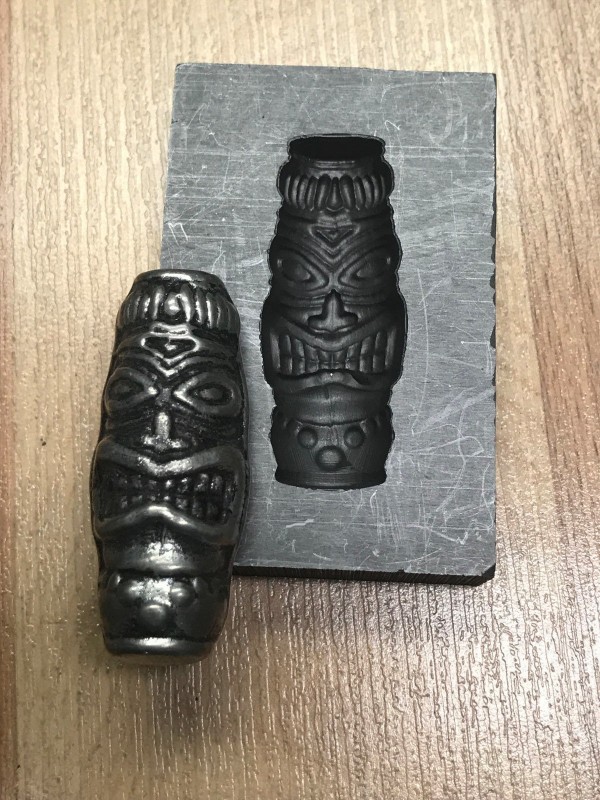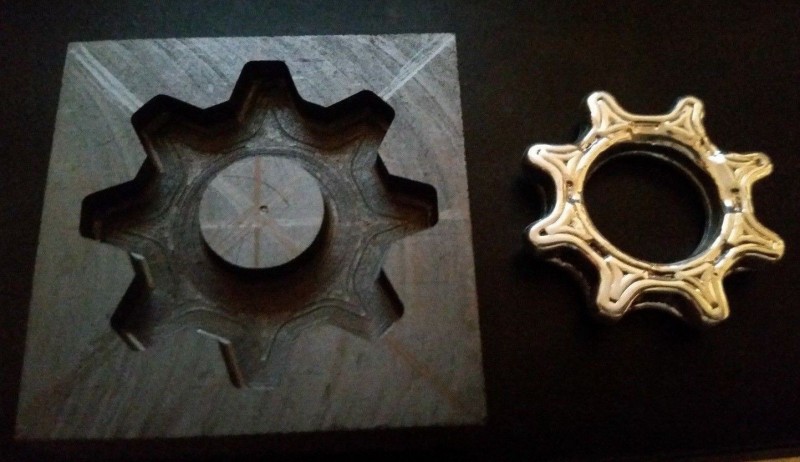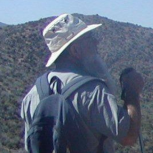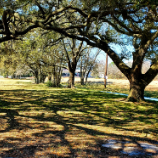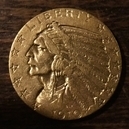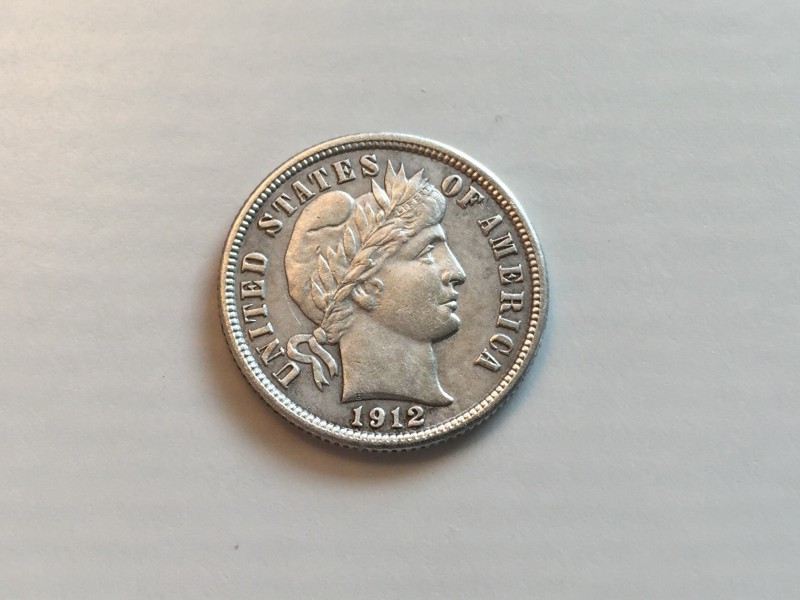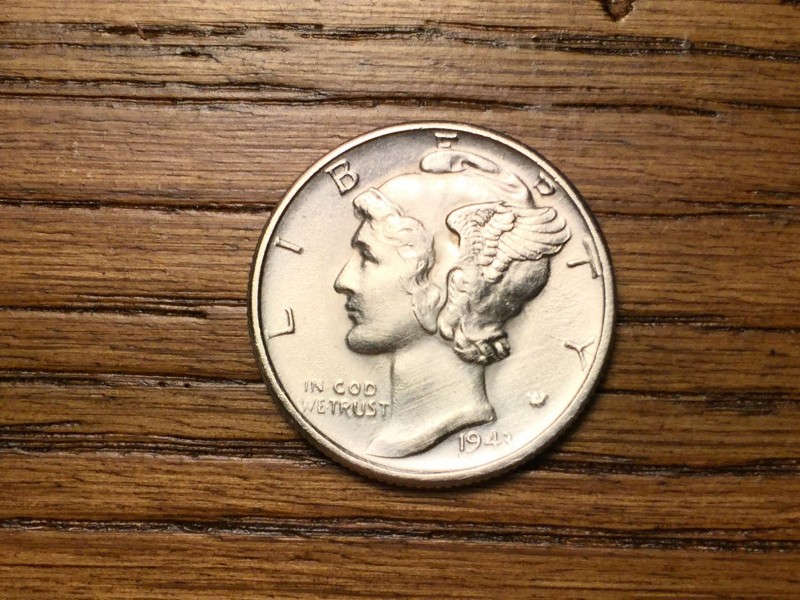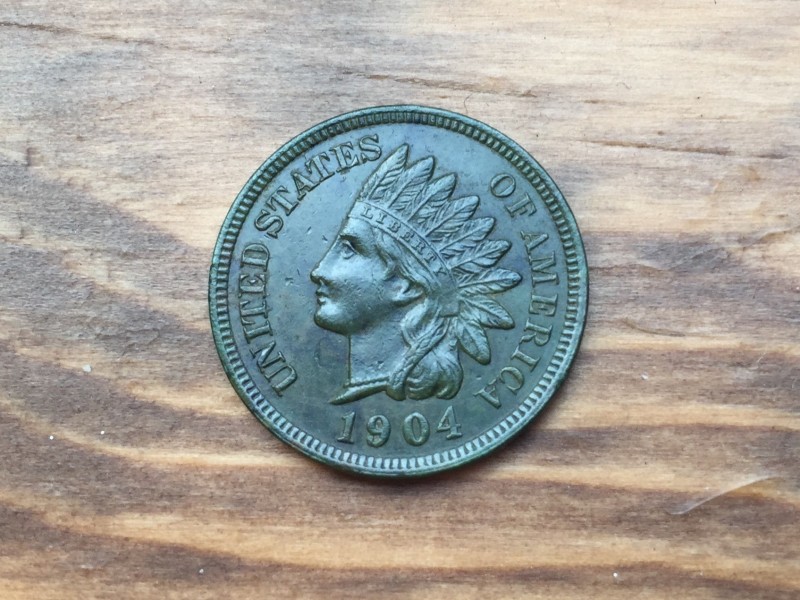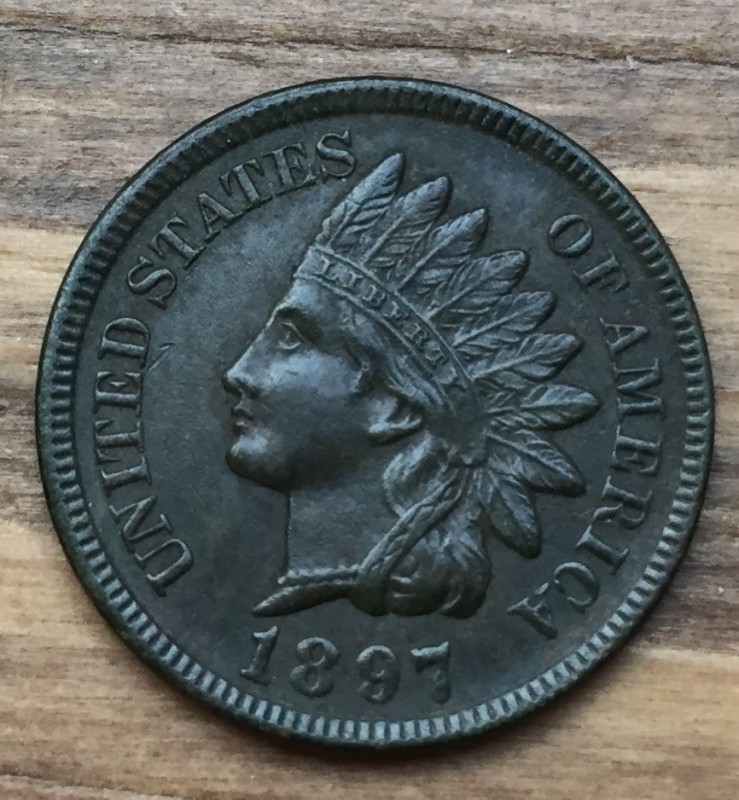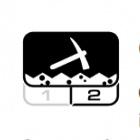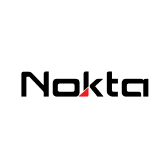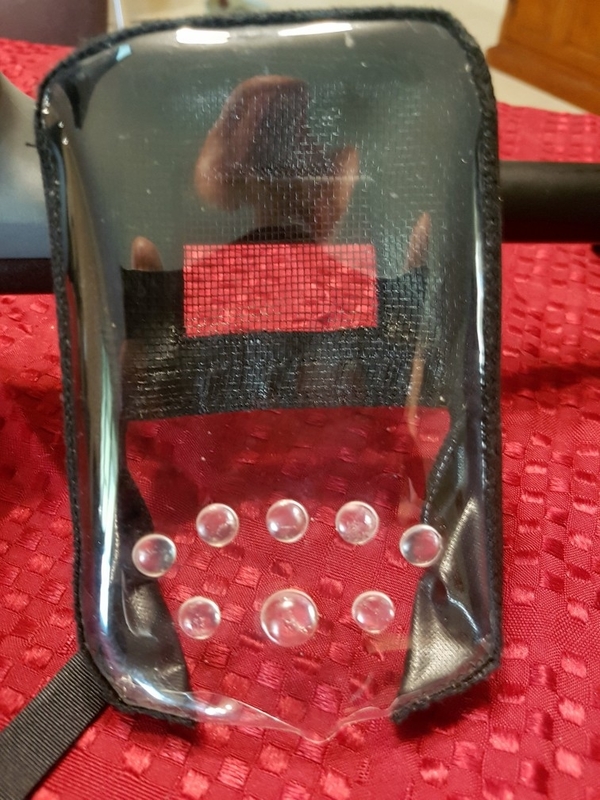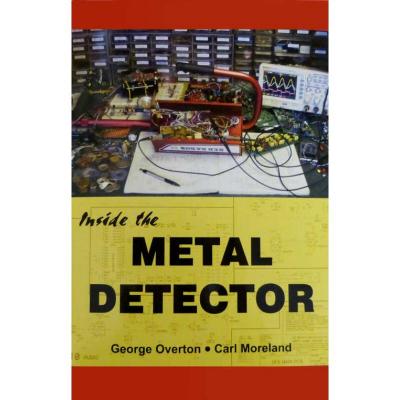Leaderboard
Popular Content
Showing content with the highest reputation on 01/29/2019 in all areas
-
Quick story-- As most of you know i work with Veterans, and a lot are dealing with PTSD --- I always thought detecting would be good therapy because they can get away from the crowds, carry a firearm in most cases (so they feel safe) and they can relax a bit. One guy showed up last week with a Minelab GoFind60---[maybe the only mInelab i havent bought ...Yet...lol] He said he was new and he hadnt found much but trash...I told him to trget places people would be sitting on the ground... like ball fields, picnics and such..I told him that I like to go around old trees. Mind you this is on an old Army base so there can be some neat things there. So far the first day he got half an old spur, second day---1912 penny in good shape!, third day- two Taxca Mexico sliver bangles with the floral design....($25ea!) So he is feeling better , he isnt so jumpy, i see him smiling now, and he is sleeping better after going to classes and then detecting the rest of the day.... That's all it took....a little detector and a place to detect---- Im happy I got to meet this new detectorist.24 points
-
Sunday morning I had a chance to go out and prospect. What to do? Where to go? I'd go back to gold if I had found gold recently so I had to think about where I had found gold in the past. I left and on my way changed my mind at least 3 times and then I remembered a new place I had wanted to check out. It is in the middle of the Mojave and I would be there about sunrise after 3 hours of driving. Off I went to explore. What I found was very interesting but it was not going to be much for the detectors. I hunted around for a couple of hours and it was time to go to one of those places where I had found gold in the past. At the end of the day my best rewards were these pictures! It was still nice.4 points
-
Yup. tinker with settings until you get the threshold absolutely smooth. then listen for any hint of a rise in threshold even if it might be just your imagination then repeat the swing over the spot. My best successes have been with Coiltek and Minelab 11" round DDs. Take your 17 x21 Detech coil and tape a 12' crescent wrench to it and it will give you a good idea of what a 7000 is like to use.4 points
-
Thanks for all the input. Ive toyed with the idea before but, ill put it back on the back burner. Ill still keep the 4800 since I know large gold nuggets have been detect in VA before with a 4500 and 5000. My buddies have hunted those patches out though before I met them. So I know there are more to be found. Im stubborn and will keep at it. I have access to a couple thousand acres of private land that is gold bearing, so that's a lot of ground to cover, but im sure there is a detectable patch somewhere. Winter is my detecting and scout season in VA and summer and fall are my dredging season. Vanursepaul - I already have too many dredges so there is no need for more. I currently am working on building three different ones lol. Ive found three small nuggets with the GM 1000 in VA, and will continue to use that and the equinox to hunt shallow bedrock. Klunker - This last outing I was using a Minelab commander 11 inch mono coil, but I also use a minilab commander 15x12 frequently as well. My general starting settings are as follows: motion: slow, Rx gain: 8, Audio type: normal, Audio tone:50, stabilizer:8, signal peak:16, target volume: 8, tracking speed: med4 points
-
Been thinking about my 8500 Now the 8500 has it warts, but it has some good things about it too. One of the 8500 warts is that it really works better with concentric coils. I don't know if it was designed that way or not but that is just the way it is, so I don't put DD coils on it any more. My frustration level with the 8500 is way higher when running DD coils. So I quit using them on the 8500. My preferred concentric coil on the 8500 is the 8" round Tek coil. It gives the best stability and target id accuracy, including on nickels. Another wart of the 8500 is the 8500 operating manual, in particularly regarding sensitivity settings. The Omega 8000 manual tells you what is going on with the sensitivity control settings. The 8500 manual doesn't and so you get in trouble right away. On the 8500, just like on the 8000, Sensitivity settings of 1 to 70 are GAIN settings. 1 is lowest Gain, 70 is highest Gain. In other words, a Sensitivity setting of 70 is MAX GAIN. If site conditions (EMI, trash, ground minerals) allow, you can raise the Sensitivity settings above MAX GAIN into the HYPER THRESHOLD settings of 71 to 99. Since the operating manual doesn't spell this out, the tendency is to try and run up into the HYPER THRESHOLD settings thinking you are only running 75% to 80% power when in reality your are running 100% plus, and in most cases, site conditions don't allow for it, resulting in some major frustration. I find that sensitivity settings around 55 to 65 work best for most sites in Deep 1,2, and 3. Deep 0 setting often allows the most use of HYPER THRESHOLD settings but Deep 1, 2, and 3 work best if you keep below Max Gain (70). A sensitivity setting of 55 in d5 (non modulated audio tones) with the 8" round concentric is good for a hard hitting 8" dime, which is pretty decent, and leaves room for power increases if the site allows. Some of the pluses I like about the 8500 is the full control of the segment audio. Instead of the normal disc or notch discrimination, I can just manage each segments audio volume. This gives me disc/notch capability while still seeing full display responses. When I combine this with the Primary and Secondary TID feature it allows me to focus on what I'm hunting for, which for me is nice gold jewelry. I've already found some nice gold with the 8500 but now I think I'm going to specialize the 8500 as a large gold ring finder. Just going to cut the audio to all the segments except the Tab and Screw Caps segments, put it in VCO and hunt matching Primary and Secondary TID signals in places where men are most likely to loose a ring. Should be a successful strategy for larger gold. Gonna find out. I'll let you know how it goes. HH Mike (might be a few weeks before I report back, forgot this weekend is going to be rainy and honey-do's are already lined out for me. Teknetics Omega 8500 Data & Reviews3 points
-
I used to be a metal detector salesperson. If I still was, here is the discussion we would have. 1. What precisely do you want to find with the detector? Coin detecting in a park calls for a different detector than looking for small gold nuggets in a desert. For most uses a beginner should start with a general purpose detector good for most uses, but if you have a specific need, like ability to work in the surf at a beach, that is important and can narrow the decision considerably. 2. What's your budget? Some people have one, some don't. Spending more does not necessarily end with a better result. Detectors now are sort of like computers in that the capability available often exceeds what people really need. For the longest time the sweet spot for general purpose power was about $700 but recent advances in technology and lowering prices means you can now get some superb detectors for closer to $500. An excellent place to review prices is at my new Metal Detector Database, which offers basic specs that can be sorted on along with reviews of detectors. Lacking any more specific information I am just going to toss out a few random models I think offer some real value at today's prices. I look for detectors that offer the ability to ground balance or adjust to soil conditions as a starting point... $256 Bounty Hunter Land Ranger Pro - Solid beginners coin, jewelry, and relic detector, dry land and wading. $259 Minelab X-Terra 305 - Solid beginners coin, jewelry, and relic detector, dry land and wading. $309 Fisher F44 - Adds robust weatherproofing to the above. $399 Teknetics Patriot - Same machine as $499 Fisher F70 - killer deal. $499 Minelab X-Terra 705 - There are no other detectors packing this many features at $499, including one of the better VLF gold prospecting circuits. This machine has so many features in fact that going higher in price will add few if any and in some cases you will go backwards! Not all manufacturers have adjusted to the new lower price levels. Frankly, above $500 you are getting into specialty and high performance detectors these days. This is the realm where you do really need to know what you want to do exactly because as you go above $500 increases in depth are pretty hair splitting and the sources of endless internet arguments. As you already know going to $649 and the Equinox 600 gets you fully submersible with built in wireless headphone capability and more. Just starting out I personally have a hard time recommending spending the big bucks. Some people say just dive in all the way. The idea is starting with anything less than the best might not get good results, and be self defeating. I say I was successfully metal detecting with detectors far less powerful than even the Bounty Hunter Land Ranger Pro above, and not all that long ago really. The technology really is mature, with excellent performance under $1000. And I know one dirty little secret. Metal detecting actually bores most people to death, and most will drop the hobby after just a few outings. I therefore prefer people get a decent detector first but not go overboard. Stick with popular models that might be easy to sell again used if this does not all work out. Stick your toe in the water and see if detecting is appealing to you before going crazy. The real success lies in good locations and hours anyway so just go have fun! As far as where to detect? Anywhere people have ever been, and the more active, the better. There are almost no limits to detecting opportunities if you have an open mind and are persistent. Check out my Steve's Guides area where I have a few articles on metal detecting basics like buying headphones plus the website Reference Library for some free metal detecting books. Finally, always leave no sign you were there. Use proper recovery techniques and take the trash to a trash can.3 points
-
The inside of my head most often resembles a bag of cats. Metal detecting for me is a form of meditation when I get into "the zone" and wonderfully relaxing. I enter the flow where time ceases to exist. Metal detecting can be very good for people who need constant low level exercise (recovering from heart attack, for instance) and for calming minds that are otherwise anything but calm.3 points
-
Mr. PG. take the money that a 7000 would cost, divide it in two, put half in your pocket, buy small nuggets with the other half, scatter them around in your prospecting area and find them with your GPX. You will then be one of the rare prospectors with cash AND gold. Would you mind sharing what settings and coils you are using on the GPX. If you're not finding gold at all with the GPX a 7000 probably won't help.3 points
-
Have you found any small gold with the GM1000 or Equinox, ie near bedrock or along benches etc? Not sure if I’d fork out the $ for a gpz in Virginia.....have you tried different coils on the 4800?3 points
-
It sounds like you are doing everything right with what you have been finding and the 7000 would probably give you the best chance, but seeing you haven`t been able to find any gold detecting, I suspect you would not do a hell of a lot better if you laid out the $$$ for a 7000 Dave3 points
-
Had a couple hours to kill this afternoon, so I took the Equinox to a park here in sunny Arizona that I’ve not been to before. Typically, my goal on these time-constrained forays into the parklands is to cherry pick the higher conductive targets in hopes of finding a silver coin. But this time I decided to also dig targets that fell within the nickel range of the EQX. The first target was a shallow 20-21 signal; yep, you guessed it - a stinkin zincoln. Next up was a 13-14...could be a nickel, but most likely a pop can tab...sure enough, it was a can tab. Swinging along, next signal was a solid hit at 24-25; at 4 inches, out popped a 1963 D copper Lincoln cent: cool, definitely some hope for silver. After digging another pop tab, I got a strange deep signal that would bounce around from 25 to 31; a coin spill perhaps? The culprit was down around 10 inches, and turned out to be a corroded 1945 D copper wheat-back penny. Checking the hole and plug revealed no other targets...a total head-scratcher, but even more reason to suspect slver coinage was in the area. Moving on, the Nox responded with a tight 12 on the display. Down around 6 inches was a surprisingly corroded 2013 D nickel. Next was a broken pop tab around the 2 inch mark, then a nice sounding 27-28 ; the silver dime I’ve been waiting for? Nope, just a flattened aluminum scew-top.? Then I get another solid 12 hit at 4 inches. Fully expecting another nickel. I popped the target out of the hole and was flabbergasted to see a gold and diamond wedding ring! At 14 karat, it’s my first ever solid gold ring. I figured that I’d better stop at that point, since there was no way I was going to top that amazing find, but I decided to keep on swinging for another half an hour since I hadn’t found a silver coin yet. The very next target was a deep sounding solid 31, so I’m hoping beyond hope for a silver quarter. Getting down past 8 inches and the pinpointer was sounding off in the bottom of the hole; another couple inches and the target was out...a Washington quarter alright, and a gentle rub revealed the date: 1941...YES! I decided to quit on a high tone and call it a day. What a super awesome hunt, and I couldn’t be happier.?2 points
-
PG. It sounds to me like you've got the detector part figured out.Now it's just figuring out the detecting part. The only thing I would suggest would be to get way out of sight where absolutely no one will see you and put on a well disguised DD coil. As Norvic stated above you have to be a little "touched" to be a successful prospector but if you are caught with a DD coil it is considered by many to be grounds for a term in an institution. With a DD coil on the 4800 you should be able to get the threshold tone dead smooth with high gain and sensitivity settings and then listen for an almost inaudible change in the threshold. I get the impression that your going to get real successful at this detecting business.2 points
-
2 points
-
Hi, the ORX looks like a great detector if you don't already have the Deus (like me) with a high frequency coil. I can't see selling my Deus and buying an ORX just for the warranty.......otherwise my out of warranty Deus has everything the ORX has and a lot more. I'm taking it with me to AZ next week for some prospecting (along with my Nox 800 and GPX 4800). I've got to get out of snowy, frozen Denver for awhile. Reading forums and doing back porch testing is definitely getting a bit old! Jeff2 points
-
Great shoot-out cut short. The 10” elliptical coil off the LST - paired alternately with the Diablo MM and the LST quickily reminded me or why I sold 2 DMM’s earlier. Beuatiful, light, elegant - but not for me. Too uncompromising - too pure, Metal - beep. I have grown used to more. The Diablo MM is sold and the LST is looking for a coil which went with the DMM. Having said all that, here’s something I posted a while back elsewhere about Tesoro. “It's not what you find - It's not what tools you own - it's the pursuit of "el tesoro" - the treasurel - the pursuit being a combination of expectation, experience, exercise. calculation and - sometimes reward. I found the simplicity and directness of Tesoro's machines to have a sort of immediate connection between seek and find - a connection that I enjoyed. The greatest detectors in the history of detectors - no. But clearly, their passing - if in fact they are gone - is the passing of an era. I found simple jewelry - lost or hidden- at the site of the destruction of an Arabian town by the Ottoman forces of the ruler of Egypt - Mohammed Ali in about 1814. I found copper scraps from smelting of ore in Sumerian times (about 2000 BC) at a mine and refining site in Oman I found the nut I lost off the end of an important bolt on my vehicle in the sands of the desert (nice to have a metal detector when you are 50 miles from a paved road in the sand). I will miss Tesoro - even though - truth be known - I never bought one of their machines new... That's the killer...metal detectors work - too well - too long. Tesoro didn't understand that - lifetime warranty - what commercial foolishness. But then, in those days - we had different ideas about what constituted business integrity. They will be missed.”2 points
-
OK, OK, Please I don't want to hear, "It's about time." This all started when I payed an obscene amount of money to a web site developer to design my new website. He got it 90% finished and disappeared with all of my money and left me with no instructions. HOWEVER, my guardian angels in the UKRAINE, came to the rescue. If you didn't know UKRAINE programmers are some of the best in the world. I have been dealing with these guys fro 25 years, they are freaking amazing. They actually wrote the enitre DMV software for the Michigan. So it finally occurred to me to ask if they knew a website designer proficient in WORDPRESS. Well of course they did. Enter "MAX" real name Maksim Nikolaenko. Max speaks English as do most of the programmers there. He is a savant when it comes to website design and especially WORDPRESS and Search Engine optimization. So over the past two months, using chat on SKYPE and screen sharing we collaborated to get my new site functional. So Max got me online with the new website, a site I feel is befitting a company that has been in this industry since 1992, http://docsdetecting.com/ But please be patient as I am in the midst of the arduous task of getting all of the content and thousands of items we carry input into the site. In the meantime take a look around. Tell me your overall impression. I would welcome the feedback. If you enjoy reading articles and adventures, at the very top on the left side of the home page there is a link titled Things of Interest. Take a gander. Thank you! Doc Steve's Review of Doc's Harnesses and Covers2 points
-
2 points
-
The poster who goes by “LE.JAG” is the chief field and development tester for the Manta project. His name is Denis - don’t know his last name. As as far as I can determine, Alexandre Tartar has only posted on the Geotech forum and then under the “handles” of “Poseidon”and “Asgard.” It was a post of his on Geotech which got Carl Moreland interested in his work and after some back and forth resulted in First Texas doing an “aquihire” of the Manta project and the team. The salt water beach detector market is a niche within a niche - water detecting - salt not fresh - beach and wading vs. diving. Fresh water, lots of waterproof detectors will do fine - even not so waterproof ones if you are careful. Salt water is another problem. Diving is yet another problem, pressure resistance greater and in the case of a PI detector, rules out the use of very short minimum pulse delays due to the huge volume of water. Gold at the salt beach - that’s the manta’s meat. Their belief is that it will be the best detector for that that has ever been fielded. It has to appear however before any of us can see if they are right! As far as land use, it does have ground balance control. It is labeled in the prototype “accept” and “reject”. I expect this indicates that the iron IB/Silence feature is at least partly controlled by changes in the GB settings. The fact that they have announced the development of a land version probably means that the GB function for the beach machine “AquaManta” is utilized in a way that makes it not optimum for cancelling highly mineralized inland ground.2 points
-
I am frankly surprised that there has been no mention of the Tarsacci MDT 8000 on this prospecting forum. At least I saw none when I did a search of this forum. This detector intrigues me. Supposedly not a PI nor a VLF. Maybe ground breaking tech. Depth somewhere in between a GPX and a VLF but with almost full depth discrimination. It's mainly been marketed as a beach machine but the same features that make it excel on the beach may also be good for hot ground. I am sure it is not a panacea for whatever woes you have with your current machine. It seems you only have the choice of one coil, a 9x11. The tones sound different than what most people are used to. It's not as deep as a GPX or maybe not even a TDI? I don't know, not much info out there as this detector has only been available since mid-December. There are plenty of ways to pick this detector apart that I have not listed but let's look at the positive aspects of it. The Tarsacci may be the first detector that offers better depth than a VLF yet retains good discrimination both tonally and with a VDI number. The manufacturer does not tout it as being hot on small gold but there are a few anecdotal references on forums or youtube questioning whether it may be OK. I dont think it will equal a really hot VLF operating in a high KHZ range but I for one do not care. I get tired of scratching for fly-poop and would welcome a DISCRIMINATING detector that would give me greater depth in hot ground. I know that I am old enough if I dig ten deep nails I am about done for a while so the old proverb of "dig it all" doesn't work for me any more. One thing that really struck me is the ability to use the salt balance feature to totally eliminate certain(many?) hotrocks. I can think of more than a few scenarios where this detectors capabilities may produce some gold in the poke. So yes, I am surprised I see no discussion or even a mention of it as a candidate for a gold nugget machine. Tarsacci MDT 8000 Data & Reviews1 point
-
Where Do I Begin? by Ron Wendt You’ve developed an interest in prospecting for gold. A couple friends have told you how much fun they’ve had looking for gold. In this article I’ll point out the pros and cons about this activity and in the end you’ll probably have decided to what degree you want to pursue your search for gold. To begin with, it must be pointed out, there are several types of prospectors: 1 - Those who wish to dig right in as a recreational prospector. 2 - One who is serious about learning about the finer aspects of geology related to precious metals and would pursue possibly developing potential income from this endeavor. 3 - A hardcore, hand miner “give me a bulldozer, I wanna gamble.” Of course mining can be a gamble and the biggest mistake some folks make is getting too serious about it. Many times most of the fun goes right out the window when it becomes serious. What happens is the deep desire for gold becomes elusive and discouragement sets in when there are no results. Looking for gold can be hard work with few rewards. Years ago an old timer once told me; “the fellows that got rich during the gold rush were just plain lucky!” Napoleon once said that too: “I want good generals, but I also want lucky ones!” Yes, there is a lot of luck in this business. The old timer and Napoleon were right. A lot of it is luck, but a lot of it is hard work to. You can choose to enjoy it with a little reward or to not enjoy it with little reward. The truth is the odds are you won’t get rich, but you might get lucky! We all know about luck. You can go to the gambling hall and pull on the “one armed bandit,” all day and not make a dime. Such is mining and prospecting. I’ve been lucky and I’ve been unlucky. I’ve been rich and I’ve been poor. I like rich better, and I like getting lucky. Shoveling gold bearing dirt into power sluices To be a prospector you must be willing to take a risk to a certain degree. There are those who think they can go out and simply put their shovel into the ground and there it is! They believe they’ll strike it rich. I have known some who have struck it big their first few times out. They didn’t have a clue, but were in the right place at the right time. There are several things in your character you should be aware of. 1 - You should be the type of person not easily discouraged. 2 - You should not be afraid of getting dirty and not afraid of hard work. 3 - You should have a keen interest in exploring, prospecting things that are related in this field because it is all connected. 4 - Be frugal. Don’t mortgage the farm. It doesn’t take much in the way of investment to get into this “field of study,” as I call it. 5 - You should not be afraid to get wet, camp out, or endure the elements. 6 - Attitude is a major in this business of mining/prospecting. This probably goes along with “don’t be easily discouraged.” 7 - Don’t be afraid to fail. Failure is a great learning experience. 8 - Have some curiosity about what could be over the next hill or under the next rock. 9 - Be optimistic. If you’re not, you probably shouldn’t be in this business. 10 - Most of all enjoy it. Enjoy it even though you don’t get rich from it. Your reward is experience and experiences many will never have the opportunity to do. Where do I begin? First off don’t go out and buy a bulldozer, when a gold pan can simply do the trick. In other words, start out learning the basics. Those basics are the gold pan, pick, shovel, sluice box, and perhaps a sniffer bottle to suck up gold from cracks. It would be good to go along with a veteran, not only to see how it’s done but to see if you like it. I have seen many times where folks will go out and buy a $1,500 suction dredge only to sell it the next year because they probably got discouraged, when a gold pan and hand tools would have sufficed. A big majority of prospectors I know will tell you they started out small, by that I mean, small mining tools which would include sluices, gold pans, picks and shovels. Once you decide you will make prospecting your side line, one can eventually branch out into other methods. Dredging for gold There are some who will head out into the world of nugget detecting. Here’s something to think about. When you spend $600 to $1,000 on a brand name detector, before you even make a decision to buy it, ask yourself this; “Where will I use it?” This may seem like a funny question, but in Alaska and the Yukon Territory, we may have a lot of gold scattered around up here, but is it detectable and accessible? Will I be able to drive somewhere during my time off from my regular job and spend enough time detecting nuggets? Is there a location close by where gold is detectable? Am I willing to invest this kind of money to use this machine in a proven area? There’s nothing worse than buying a piece of mining equipment and not be able to get into areas that are productive. For instance, the mountains behind my house generally yields mostly fine gold and some hardrock gold. For me to get any bigger gold I must travel south of my house about two hours down the highway or 5 to 10 hours to the north to get into productive ground. I am willing to spend times going to my favorite remote spots in search of gold. So you must determine how much am I willing to put into this to get results? It’s the same with going from your gold pan/sluice operation to a high banker or a suction dredge. Are you planning on a few choice trips to areas to get results, which by the way aren’t guaranteed? My recommendation is build up your knowledge of prospecting over 2 or 3 years before investing in bigger toys. This way once you’ve established a good, possible gold source, you might feel it’s now time to go for higher production. Large scale industrial miners work in much the same way. I have a good friend who suction dredged for a few years on a creek. After taking out numerous ounces of gold, he made a decision to go bigger. From there he bought a small D-6Cat to feed a sluice box, then eventually he added a backhoe. Today he has a D-9, a bigger backhoe and a dragline. He’s been seriously at it for over 25 years. In the off season he has another job to support his “sickness” called “gold fever.” Gold found by a prospector I’ve met a few folks who complained: “Yeah, I went out for a couple hours, and didn’t get a thing. There’s nothing out there!” He immediately was very skeptical there was any gold at all out there.” I said that was fine. There’ll be more for the rest of us! I told this fellow, a couple hours does not do the trick. You have to work at it. It won’t jump up into your pan, and no one will tell you exactly where it is because they don’t know themselves where it is exactly. We have an idea, but we can’t always pin point it. Most of the time we walk right over it. I remember an old prospector from up on the Yukon River was once asked where he kept all his gold, to which he replied; “Its in a safe place in the creek!” He knew he could dig it out anytime he wanted to, but he had to make the effort. No one would get it for him. He took out enough gold to survive on most of his life. It was his lifestyle and sole occupation. Finally, recapping everything, I can’t stress enough: 1 - Start small, then gradually increase your devices to accommodate your potential production. You might advance from a sluice/gold pan to a nugget detector. You might eventually obtain all the tools of the trade, short of buying a bull dozer. The bull dozer purchase would probably indicate you’re pretty serious or you’ve got money to blow! 2 - Enjoy this endeavor. If you don’t enjoy it, get out of the business. You probably should not have gotten into it. 3 - There’s no room for discouragement. If you’re easily disappointed then prospecting is probably not for you. 4 - Expect to work hard at it. Be patient. Patience is a virtue. You will put in time of no rewards, but when they come, it’s worth it all. 5 - Don’t get greedy. If you hit it big, a few ounces here and there or bigger, consider it your much deserved reward. 6 - Don’t mortgage the farm. Never, never do this! I’ve known miners to put all their eggs in one basket and they all cracked! Unless you like living in tents on the edge of town, never gamble with your stability. 7 - Enjoy prospecting. Its one of the most fascinating occupations I can think of. What better way to enjoy the outdoors, splash around in cold water on hot days, explore old ghost towns, collect rocks, view big game, there are folks that would give their right arm to do this. A word of encouragement to those in search of gold: Practice patience, be optimistic. Always learn from your mistakes and always keep enough bug dope in your pack! by Ron Wendt 2005 Note from Steve Herschbach - Ron was a dear friend who left this world too soon. He donated this article for use on the website not too long before his health finally failed. We all miss you Ron! R.I.P. Ron Wendt 1956 - 2007 From the obituary: Ron Wendt was born April 24, 1956, in Fairbanks, in the Territory of Alaska. He was raised on his family’s homestead on Chena Hot Springs Road outside of Fairbanks and his father’s mining claims in the Circle gold fields. He developed an early interest in Alaska history by exploring ghost towns and mining camps and talking with old-timers from the gold rush era. Ron worked as a gold miner, newspaper reporter, photographer, college instructor, construction worker and custodian before starting his own publishing business, Goldstream Publications, in Wasilla. He wrote about gold rush history, modern day mining and prospecting, and many tales of Alaska. He was a member of the Alaska Miners Association, an avid baseball fan and loved to travel the roads of Alaska with his wife, Bonnie.1 point
-
Big Arm state park on Flathead lake with my mxt and the detech 10x5 coil. ran it in relic mode with the sens. hot and the disc pot set at 2. the prospectors pick worked great to get through the cobbles to recover the targets. Highlights were .65 gram silver bracelet, 54 s and 56 wheat's, and junk butterfly pendant. it sure was nice to be out swinging. just thought I'd share my first hunt this year. The best of luck to all !1 point
-
These old machines are before the advent of high gain circuits pumping higher voltages to the coils. They all have a nice, soft, mellow feel but lack in true punch compared to modern machines. The Diable compares favorably to the 1990 original 19 Gold Bug for performance, no surprise since the same designer. They are hard to compare to new machines as most everything made these days is "sparkier". I have never had luck with the nostalgia and going backwards thing. Improvements in the technology may be glacially slow at times, but it does improve. The Compass Gold Scanner Pro was my last walk down memory lane quite a few years ago now. Some things you should not go back to, as the reasons you left the old machine in the first place still exist but even more so.1 point
-
I’m sure you are not alone. A good start might be the Better Business Bureau in Prescott. https://www.bbb.org/us/az/prescott1 point
-
You can buy counterfeit detectors all day long. Minelab and First Texas have been hit particularly hard simply because their machines have been very popular with gold prospectors in Africa. Most counterfeits are blocked from sale in the U.S. but are readily available elsewhere. Buyer beware. Any brand new detectors being sold substantially below the Minimum Advertised Price that manufacturers enforce should be immediately suspect. "Too good to be true" is your best form of protection.1 point
-
Yep i have that document and read it regularly, i also have pretty much all the docs it cites as sources. I also have made lidar maps of pretty much every major mine in VA and in the areas i have access to i have attempted to map out vein trends. I am definitely a prospector at heart as i am always searching for the next good area. My main good gold area for dredging has pretty much been worked out, so im searching for the next area to equal it or be better. And i like having options. lol1 point
-
1 point
-
Today - after 2,5 years of waiting - I've received an invitation to certify for decting in the fields. 3 days course + 1 day exam at the end of march - keep your fingers crossed - Sinclair goes relics1 point
-
Did Minelab not go though the same thing a few years ago? Amazing what people will do to profit from others research.1 point
-
1 point
-
Stick with the dredge. Sell the 4800... Spend the money on dredge accessories ?1 point
-
What I did was to get the most expensive machine that I could, got disappointed, and continued to dig. I have found lots of treasures, some had value many didn't. I guess you can say that beauty really is in the eye of the beholder. Now that I'm a lot older it's just the act of hunting that satisfies the need. Buy one machine first and both try it while the other retrieves. See if you really like it and go from there. Equinox 600 is a good place to start. It has a good price point for what you get and is easy to use, light weight and waterproof. Have fun and stick with it. If you get disappointed put it down for awhile and try again later. I've been doing it for 45 years on and off and I still love to go out with my wife and dig and discuss life. And how much she spends on Amazon. She has her own machine now so we can be together and go on our our adventures at the same time. It's fun!1 point
-
The 3 replies you`ve got from Ph, Peg and KL are all on the money. Gold detecting is 20% Detector 20% geo knowledge, research etc 99% persistence, stubbornness and a good case of gold fever plus a "touched by the sun" condition . Adds up to more then 100% but that`s the way it is, once you`ve broken your detector virginty and got that first elusive piece you`ve added an experience to the formula and that`s worth its weight in gold.1 point
-
Hi, welcome to the forum. phrunt gave you some good advice. Are you folks young or older and is the weight of the detector possibly and issue. Some detectors work great but are not exactly fun to swing for long periods of time because they are heavy or not balanced well. 3 lbs or less and adjustability are important to some people. Since I live in an area of the country that has really difficult soil for detecting I'm also asking: where do you live (state or province) and what is your soil like (if you know)? If you want to detect for coins and jewelry in parks and public land from the surface down to about 5" just about any properly working detector will do just fine. If you want to go deeper for older coins and relics, detect on dry and wet salt beaches, detect in or under water, detect for gold nuggets, or you live in an area with really tough soil mineralization conditions, you will have a more exclusive and often more expensive group of detectors that can do those tasks. So, think about those questions and get back to us when you can. Jeff1 point
-
In my experience, this is actually a fairly common occurrence for deep copper coins -- ID while (deep) in the ground higher than expected. It's nice, though, that it is high instead of low. Low tends to indicate nearby trash (iron in particular) contaminating the copper signal. The Equinox is pretty good at giving some kind of positive ID, even with nearby trash. That ring is a beauty! Also, I'm stuck on one silver quarter over the last 3 years of serious hunting. Any (solid) silver is good silver, though. Nice diversion for you when you're not out looking for nature's jewelry. ?1 point
-
Nice going there Lunk! Silver and Gold all in one hunt. The way I look at it is every park has gold it's just a matter of finding it. Just look for the bedrock strick1 point
-
Well all this wonderful advice and a true concern for preservation of coins is starting to overwhelm me I think but I'm sticking with Ron deathray's friend. "I like them shinny". So I have now taken up DIY Alchemy and Metallurgy and have begun to make every penny pay for it's self by way of an auction. If you wish to purchase any of my Pirates Treasures please bid on them at Trademe NZ. The rest of some of my not so precious coins have found there way to the smelting pot and have begun a new life as ornaments. I thank everyone who participated in this discussion and very much appreciated your advice on cleaning coins. I will from now only refer to a coins in there oxidised condition as Toning thanks to Swapstomper Al.1 point
-
A very unique first gold but you are still a nugget virgin. Better 'luck' next time! ? Keep trying. You will find a little, tiny $50 nugget soon. Mitchel1 point
-
It has been mentioned elsewhere in this forum, but it's worthwhile to mention again. Historic and current USGS maps are on-line and you can effortlessly overlay one on the other at this site: http://historicalmaps.arcgis.com/usgs/1 point
-
Since it is the start of the new year, I was just wondering what everyone's top few detecting goals are for the year. My goals seem modest at the start of the year, but there is usually an item or two on the list that I have to hustle to achieve. ;) For 2019 - my top goals are: Best my gold jewelry count (which would be 7 pieces of gold this year... I forecast that my foil/pull tab count will also be a record this year too). Hunt in 6 different states Finally find the elusive (to me) 1800's coin (closest so far was a 1902 Indian in 2017) Nugget hunt for the first time (and hopefully not the last) Of course I have some other goals around silver coin counts, wheatie counts, hours hunted, and a few new locations that I will be embarking on my updated "Quest for a Silver Coin" challenge, but these are the ones that will be a challenge. So guys and gals, let's see 'em! Happy 2019 Hunting everyone. Tim.1 point
-
1 point
-
I don’t worry about ruining the value of a $10 or $20 dime by polishing it up. I just want them to look nice. If my efforts make a $20 dime into a $15 dime that’s just too bad! If a coin is worth over $100 maybe I might start thinking about such things. Some prior threads... Question Regarding Cleaning Equipment After You Find The Coins And Relics Cleaning Old Silver Beach Finds How To Clean & Preserve Your Metal Detecting Finds Cleaning Old Silver, Copper & Bronze Coins & Relics1 point
-
I’m wondering just what the Equinox II will do to the market. The more the Equinox shares in CTX tech, like Target Trace for example, the more I see it obsoleting the previous incarnation.1 point
-
Anybody else notice the SD card reader? Maybe they use that to load the firmware before they assemble it? Although I guess there would be a header on the board for the USB/Charging port. With the case being glued together, I guess it's not much use to us anyway. There doesn't seem to be a SD card present in the Xray either. I hope "they" aren't secretly uploading all my treasure spots lol I mean what else could it be besides a conspiracy.1 point
-
It sounds like the NEL Sharpshooter coil is working out very well for you rled2005. That seems to be one of NEL's most popular coils, and most comments are very positive. Personally I feel that in general NEL coils seem well built, perform well, and are are a good value pricewise. I currently own two, a 6.5x3.5" Snake for my F75, and a 12x13" Tornado for my G2+. Very happy with the build quality and performance of both. I am currently considering getting a 5" round Sharp for my G2+ also. The only NEL coil with quite a few negative comments seems to be the Hunter.1 point
-
Yes Mike, but non-ferrous can read into the ferrous range for many reasons. That’s the entire reason I wrote the article. It is just as valid for a non-ferrous item in mineralized ground with no other items nearby as it is for a non-ferrous item surrounded by ferrous. I run into this constantly as a nugget hunter where no ferrous at all is involved, just gold nuggets in mineralized soil. Same issue with a gold ring on a black sand beach. You don’t need nails around for non-ferrous to get pulled down into the ferrous range. I almost never hunt the nail beds, but deal with this every time I detect. My ground here will make a dime read ferrous at depth with no other items nearby. I have seen the F75 identify a .22 shell casing as ferrous when sitting in plain sight on mineralized ground. I was only referencing Tom's original as I figured people would think he "discovered" this and then I write up this article later without crediting him - well, you know how people can be. I am glad you posted because t made me do some looking and I found that Tom did an official article on this for Fisher - 2009 Fisher Labs World Treasure News on page 11. I added the link to my original post above. Did not know (actually forgot) about the 1N mode but being preset - well, it would have been better to offer an adjustable tone break. Unfortunately I have been told the T2 / F75 architecture does not allow this as an easy change. Anyway, I am not trying to knock the F75 - it is one of my favorite all-time detectors. Just trying to pass on some info that might help somebody out there. The bottom line is simple. The tone break settings on the F75 (and T2) are factory preset for all tone modes except mono tone, and cannot be adjusted. The break between ferrous and non-ferrous is too aggressive, and will misidentify many items, especially gold, as ferrous when the signals are weak. This is most often seen in highly mineralized ground.1 point
-
Yup, same deal with T2 as a predecessor of the F75 but the ferrous range runs from 1 - 40 instead of 1 - 15. Going to two tones on the T2 will automatically make anything under 40 go ferrous low tone. I agree that as low as 30 is worth investigation. In fact trough trial and error people have determined that a disc setting of 21 on the T2 achieves about the same result as a disc setting of 6 on the F75. Remember you will dig more trash so this is last ditch type stuff. The Gold Bug Pro has an inherent tones advantage since as a nugget detector it was recognized how important this is, and as a newer model the V-Break variable ferrous tone break was created for the Gold Bug and Gold Bug Pro. The Gold Bugs have ferrous starting defaults starting at 40 but I found gold regularly down to 35. And you are right again Simon - hunting all metal only works with sparse targets. Monotone and dialed in disc is better for anywhere the target density gets excessive.1 point
-
Hello Dave. I just happened to see this post as I am traveling in Russia for a rally. If you contact me at dilek@noktadetectors.com, I will be happy to assist you further next week. Regards, Dilek1 point
-
I have the ML supplied screen protector over the screen, then a control box cover. For those who hunt at night or with gloves, and don't want to be looking at the control box everytime you press a button, I attached self adhesive rubber domed drawer stoppers to the control box cover (I guess you could do the same to the "full face" screen protectors in this thread). I used 11mm for the pinpoint button, and 8mm for the rest.1 point
-
Before Carl Moreland was Engineering Manager at White's Electronics (and now First Texas), he created a website that has more technical information on metal detectors than any I know of. The Geotech website has lots of interesting stuff and in particular it has a lot of "build your own" metal detector projects for the electronically minded. I have never done this myself but if you were ever curious about what makes detectors tick a lot can be learned here. Projects http://www.geotech1.com/cgi-bin/pages/common/index.pl?page=metdet&file=projects.dat Info http://www.geotech1.com/cgi-bin/pages/common/index.pl?page=metdet&file=info.dat George Overton & Carl Moreland, co-admins for the Geotech web site, also wrote the new book, Inside the Metal Detector. This is not another "how to use a metal detector" but rather a look inside to the operating principles and electronics that make a detector work. Inside the Metal Detector explains theory and offers numerous experiments and projects that demonstrate the theory. You can build an off-resonance pinpointer, a GEB-discriminator, and a microprocessor-controlled PI detector. Even if you're not inclined to build a detector, the concepts learned from ITMD will help you better understand how your own detector works and what all those controls are really doing. The book can be purchased as paperback or Kindle format on Amazon1 point





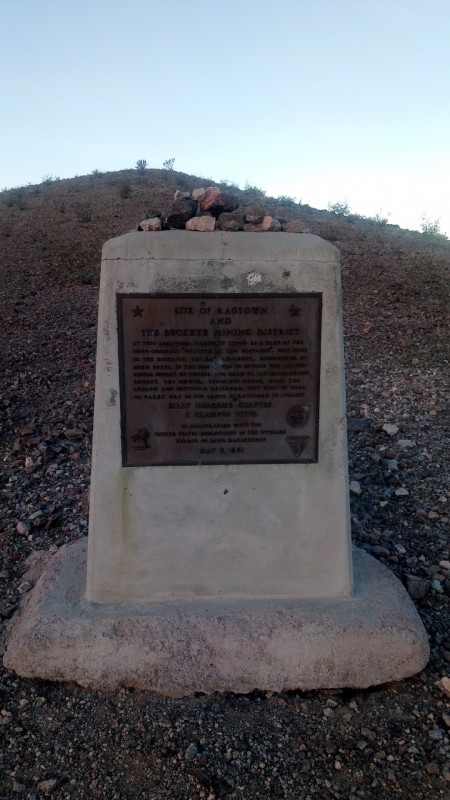
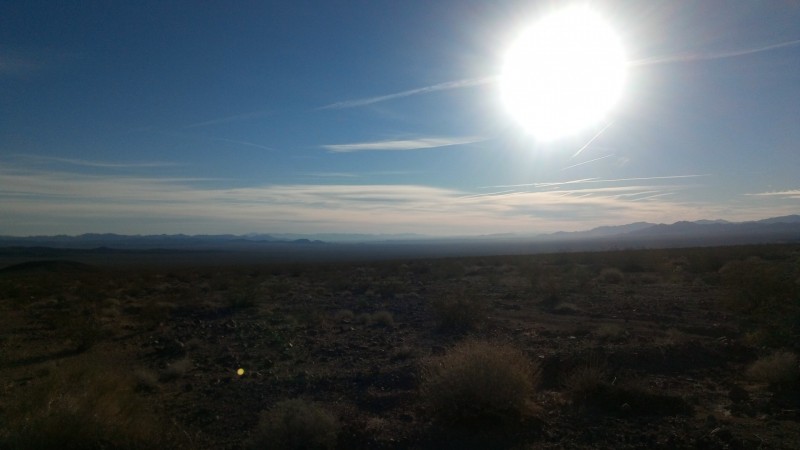

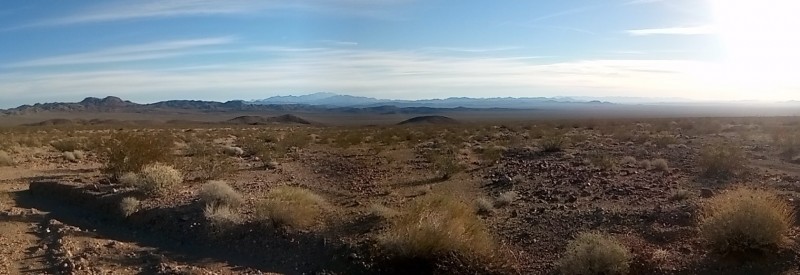
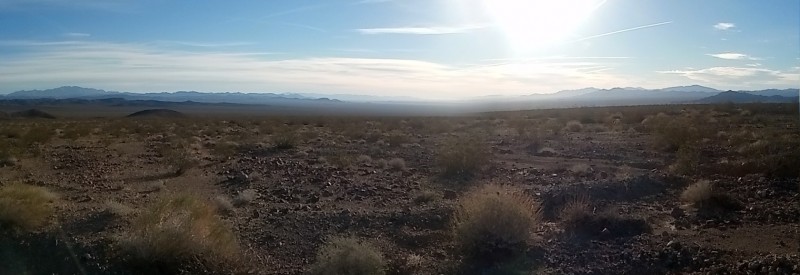

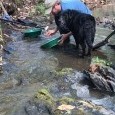
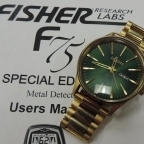
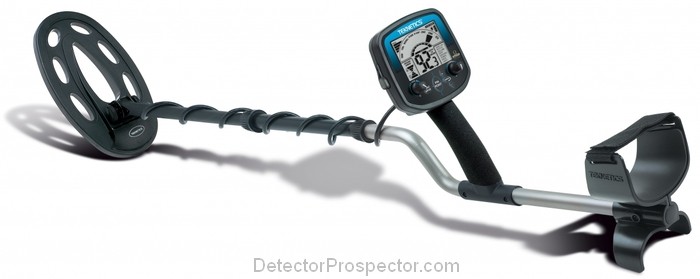



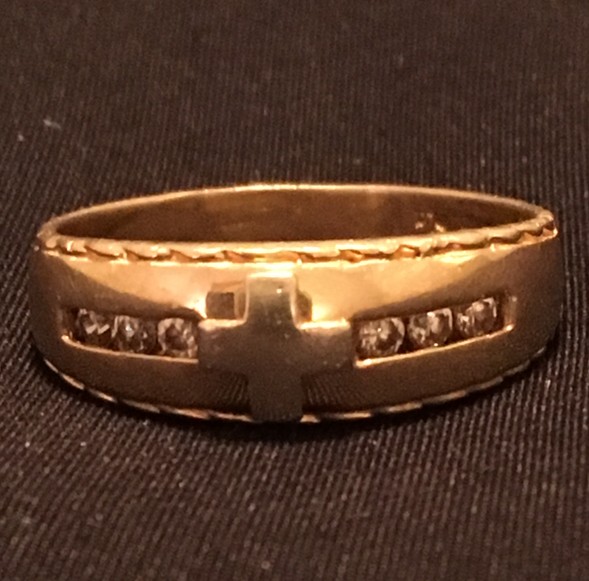
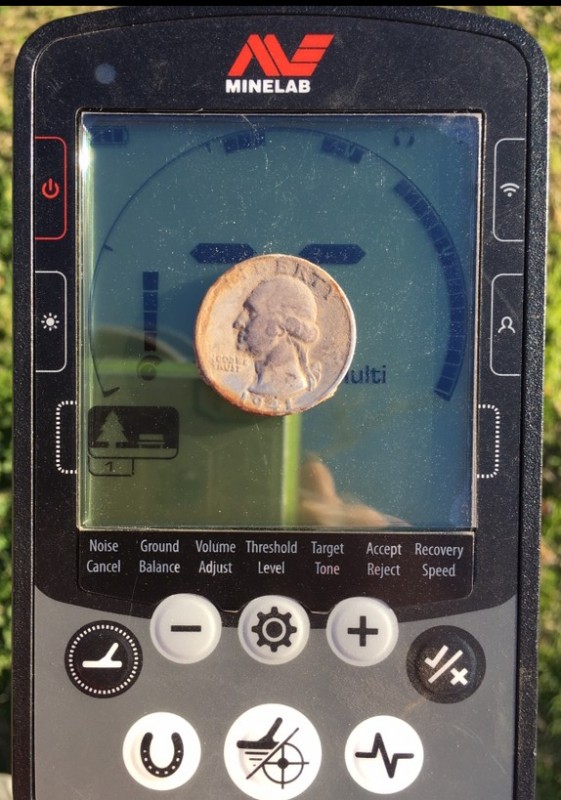
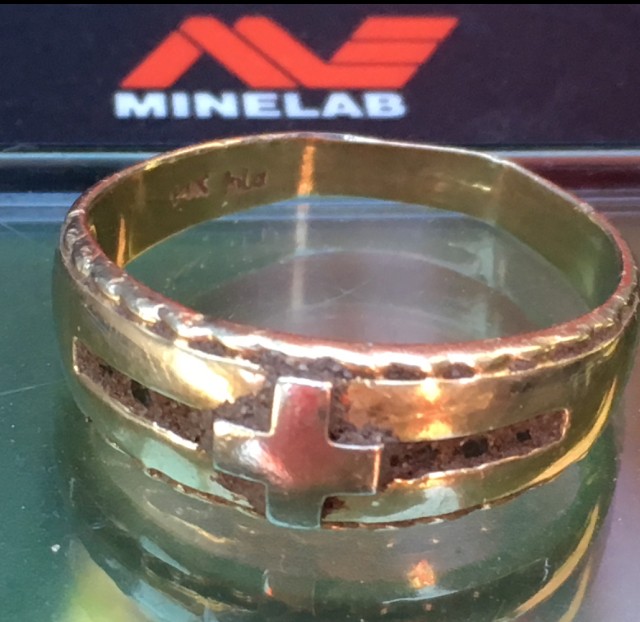
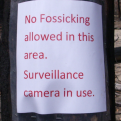


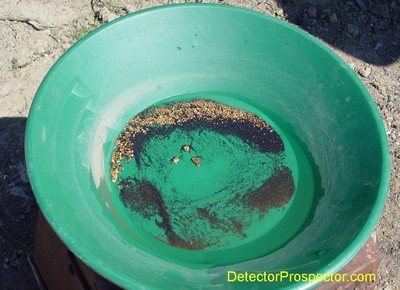

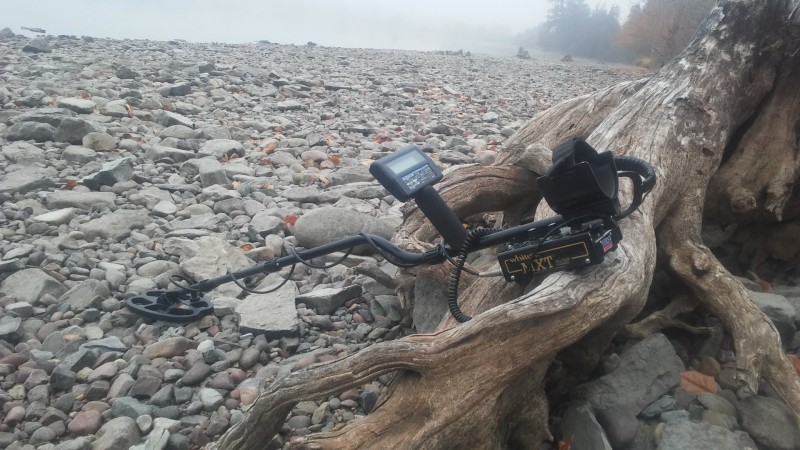
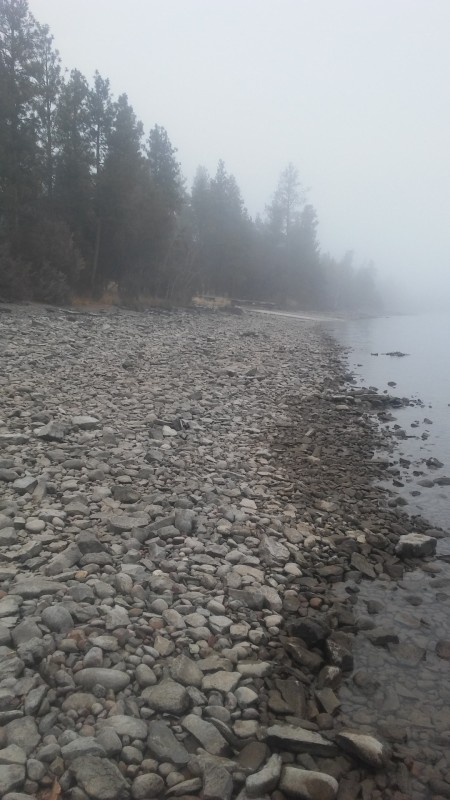
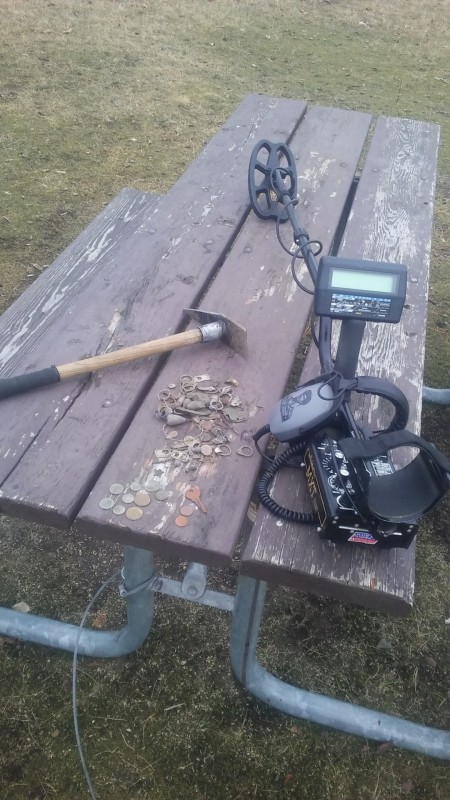
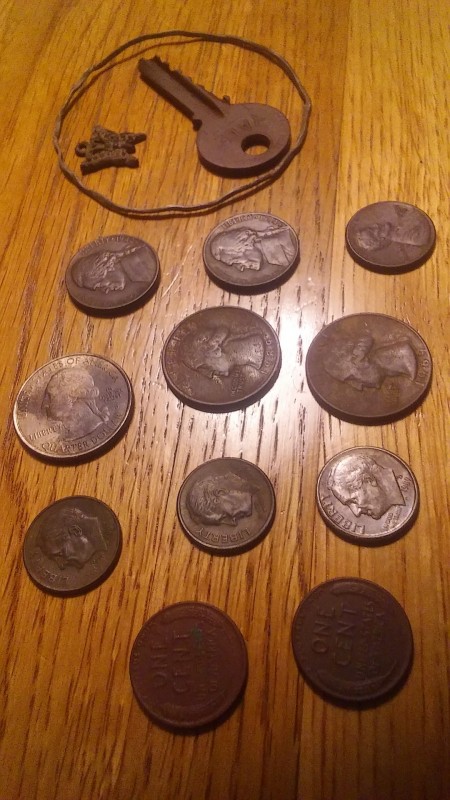
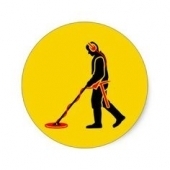
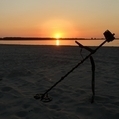


.thumb.jpg.77e4cb5bf39d44bdd2050d2edb7dfdb1.jpg)


